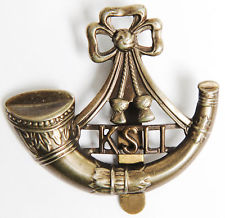Personal Details
Born: In 1896 in Tushingham, Cheshire, near Whitchurch, Shropshire.
Family: He was the sixth of ten children born to George Jones, a farm labourer, and his first wife Mary. Mary died in 1901 and George married again to Martha Oliver with whom he had two further children. Also living in the household were three children from Martha’s previous marriage. Walter married Ellen Savage (nee Walsh) on 4 January 1919 in Lancaster, Lancashire; he had one step daughter from Ellen’s previous marriage – Mary Hilda Savage. No children for Walter’s marriage can be located.
Residence: In 1901 he lived at 8 Mill Cottages, Grindley Brook, Whitchurch with his parents and siblings. In 1911 he was boarding in Tushingham, Cheshire. the address for him on the 1919 Absent Voters’ register was 8 Grindley Brook, Whitchurch. When Walter was discharged from the army, he lived at 26 William Street, Miles Platting, Manchester.
Employment: He was a farm labourer in 1911 and 1914.
Died: In 1957 in Whitchurch, aged 57.
Military Details
Regiment: King’s Shropshire Light Infantry
Rank: Private
Service Number: 13631
Date of Enlistment: 11 September 1914
Date of Discharge: 3 April 1919
Reason for Discharge: Demobilisation
Other Information:
Ellen’s previous husband, James Savage, Lance Corporal 305590 Lancashire Fusiliers, lost his life in 1917 fighting in WW1. Walter is the brother of Joseph Henry Jones who also served in WW1. Walter suffered a bullet wound in his left hand in October 1918 and was hospitalised to Manchester.
Walter was awarded the Campaign Medals (1914/15 Star, British War Medal, and Victory Medal)

The 1914 Star (also known as 'Pip') was authorised under Special Army Order no. 350 in November 1917 and by an Admiralty Fleet Order in 1918, for award to officers and men of the British and Indian Expeditionary Forces who served in France or Belgium between 5 August and midnight of 22–23 November 1914. The former date is the day after Britain's declaration of war against the Central Powers, and the closing date marks the end of the First Battle of Ypres.
The 1914–15 Star (also known as 'Pip') was instituted in December 1918 and was awarded to officers and men of British and Imperial forces who served against the Central European Powers in any theatre of the Great War between 5 August 1914 and 31 December 1915. The period of eligibility was prior to the introduction of the Military Service Act 1916, which instituted conscription in Britain.
The British War Medal (also known as 'Squeak') was a silver or bronze medal awarded to officers and men of the British and Imperial Forces who either entered a theatre of war or entered service overseas between 5th August 1914 and 11th November 1918 inclusive. This was later extended to services in Russia, Siberia and some other areas in 1919 and 1920. Approximately 6.5 million British War Medals were issued. Approximately 6.4 million of these were the silver versions of this medal. Around 110,000 of a bronze version were issued mainly to Chinese, Maltese and Indian Labour Corps. The front (obv or obverse) of the medal depicts the head of George V. The recipient's service number, rank, name and unit was impressed on the rim.
The Allied Victory Medal (also known as 'Wilfred') was issued by each of the allies. It was decided that each of the allies should each issue their own bronze victory medal with a similar design, similar equivalent wording and identical ribbon. The British medal was designed by W. McMillan. The front depicts a winged classical figure representing victory. Approximately 5.7 million victory medals were issued. Interestingly, eligibility for this medal was more restrictive and not everyone who received the British War Medal ('Squeak') also received the Victory Medal ('Wilfred'). However, in general, all recipients of 'Wilfred' also received 'Squeak' and all recipients of The 1914 Star or The 1914/1915 Star (also known as 'Pip') also received both 'Squeak' and 'Wilfred'. The recipient's service number, rank, name and unit was impressed on the rim.

